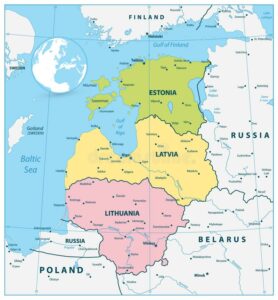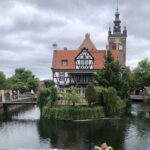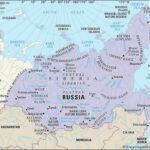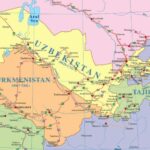Baltic States are on the front of this tragic European war and the internal debate is very hot, so as the discrimination of the important Russian speaking minorities present on these territories and the immigration flows from Ukraine. But most important should be to create team working of their best minds to think how to reposition their strategies to the future, once that this war will finish, because geopolitics of Center-North of Europe will certainly be extremely different from now. These countries have very marked identities, so it’s not correct to talk always of Baltics, languages and cultures are very different in each of them and only in the last two centuries they were involved in some common events, from Russian empire to Soviet Union times, to the first wave of independence after first World war. As all the new countries created after the first European tragedy, they are very jealous of their fresh independence and very nationalistic. And very suspicious also of their neighbours countries, Russia and Germany, after their devil pact Molotov-Ribbentrop of 1939 on Poland splitting, which destroyed also their fruitful self government first phase 1918-1939. But why these countries have flourished with their economies at a level never reached from the other central European ex Soviet Union countries? During Russian empire, at Catrine the II time, they were monopolising all Russian export to the world, because St. Petersburg harbour iced during the winter, so all the products, mainly wood, were crossing to Riga and neighbours countries to go to the world. Russian left great autonomy to German properties and traditions in farming and to Jews international capabilities of shipping and commerce. This combination of positive factors created the Baltics development and high level of social and economics standards, reflected in beautiful private mansions and castles of 1700-1800, and in the explosive liberty architecture of Riga from 1880 to 1920/25.
Being service/logistic economies, they always needed open channels with vaste territories on their east, Bielorussia and Russia, confirmed by USSR creation and now from March 2022 disconnected. German also escaped during II World war, and Jewish have been already prosecuted by German Nazi. So for the future will be difficult to change their development model to find new opportunities of well being for these communities. Before the present war spontaneous strategies have been:
- For Estonia high technology, ICT and Web, supported by brilliant young vision, but also by common language and culture with Finland, which account for 20% of their trade. Also in USA Estonia has now a reputation like Silicon Valley, an area of continuous innovation and start-up.
- For Lithuania historical connections with Poland, 8% of population polish speaking, local vocation to commerce, which created large store chain companies very up-to-date and exported in other European countries. Main Partners Poland and Germany, substituting Russia and Bielorussia, in perspective also more integration with Ukraine rebuilded.
- For Latvia the breaking off from Russian economy has been more difficult and the service economy moved from Logistics to Banking but then EU regulated more strictly these financial activities. Main trading partners are the other two Baltics , 30% each due to the Riga harbour, and a growing Sweden in wood and banking, with 6% equalising now Russia and Bielorussia.
New more effective alliances must be developed for the area, OTAN will probably push Germany to invest more in manufacturing activities, where Germans are not present in Latvia and Estonia. For Latvia, Sweden will be also a potential partner, due to lower cost of manpower and large territory available. Logistics tradition maybe can push to restart new relationship with Bielorussia, where 150 Katvian enterprises operates in wood and related machinery field, Fourth and last scenario could be a more strict Baltics integration, useful but probably not sufficient to create new markets and opportunities of growing. It’s time of strategic thinking, it’s time of big change for these beautiful countries. It’s time to flourish again, engaging the old roots with new ideas.




